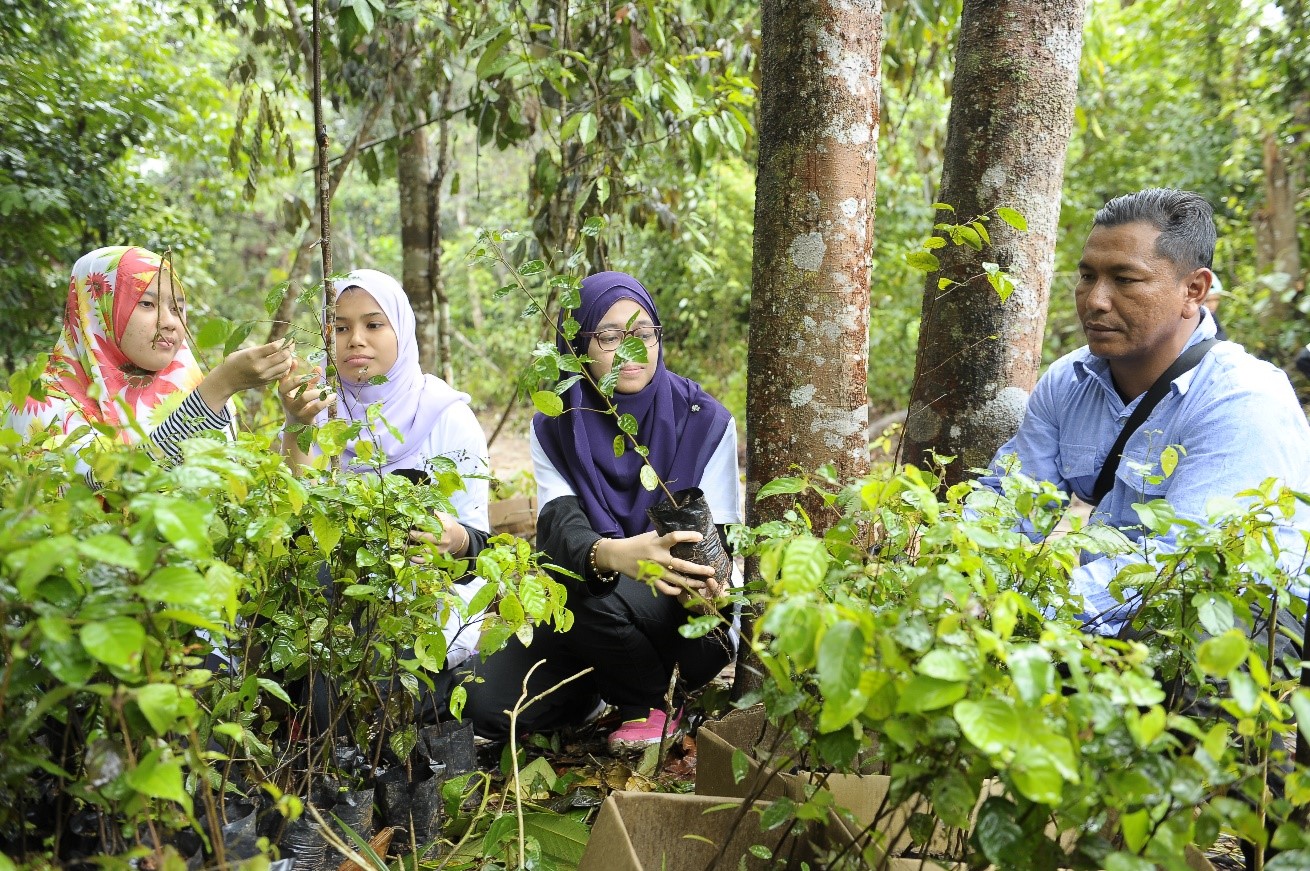Planting a Right Tree at a Right Place Approach

This approach to successful tree planting that is “Planting the right tree at the right place” was the main tree planting concept adopted by UMP in the early stage of greening the campus, especially in Pekan Campus. We used native plants that can grow well under sandy coastal ecosystem. Some of the species include, Casuarina equisetifolia, Syzygium grande, Azadirachta indica, Calophylum inophylum and Anacardium occidentale. However, some of these species are not readily available in commercial nurseries as they are not commonly used as landscape plants. By planting these species, survival rate of plant species had increased significantly as they survived well under the harsh costal environment as compared to the early development stage where the consultant planted many landscape species which are not suitable to be grown on-site.
Succession and Pioneer Species Concept
By adopting the concept of ecological succession through gradual process by which ecosystems change and develop over time, planted tree species can adapt, thrive and compete against other species under a very specific set of environmental conditions. If these conditions change, then the existing species will be replaced by a new set of species which are better adapted to the new conditions. However, if left undisturbed, the area will undergo different successional stages, each with its own characteristic mix of species. Having that in mind, we started our trees planting programme by introducing two pioneer tree species from Leguminosae (Fabaceae) family that is widely available, Acacia mangium and Acacia auriculiformis. Pioneer species are the first species that grow in an area after a disturbance, and they are the first stage of succession which allow for a foundation of other subsequent growth to take place. Its success is due to its extremely fast growth rate, tolerance to high pH level, low nutrient content, ability to grow well under high competition and relatively free from any disease. These trees form a symbiosis with soil bacteria (genus Rhizobium) through root nodules, in which the bacteria transform nitrogen into organic and inorganic compounds containing nitrogen. The trees grow fast, provide shade, enrich soil nutrients, reduce water evaporation from the soil and provide humus through litter, thus making the environment condition ideal for the next stage of the trees planting programme.
In collaboration with the Forest Research Institute Malaysia, A. mangium was used as nurse plants, which facilitate the growth and development of other plant species (final or target species) beneath their canopy. The trees offer ideal microhabitats that are more favourable for seed germination and growth. Nurse plants play an important role in recovering the structures and functions of primary ecosystem and are thought to be a driving force in the succession of certain environments, especially in extremely degraded ones.

